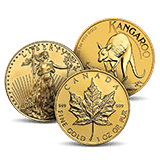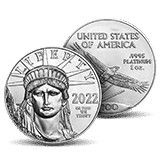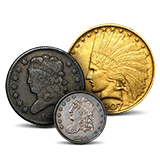
When copper coins are labeled Brown (BN), they have retained less than 5-15% of their red mint, while the rest of the coin has turned a brown color.
So far, we’ve explained character strikes used for copper coins like the Red and Red/Brown labels. Red pennies have almost all of their mint color preserved, and Red/Brown cents have retained 10-90% of their mint red color, which leaves Brown on the lowest end of the copper spectrum.
What Causes a Copper Coin to Turn Brown?
Whether it is in the Statue of Liberty or a coin, copper reacts to the air. Like the Statue of Liberty, which is now green, copper coins display a different color after they have been exposed to the air.
Newly minted copper coins showcase a lively orange or orange-red color. As soon as they encounter open air and interact with the gases in it, the oxidation process begins.
During oxidation, compounds like hydrogen sulfide, carbonyl, and dimethyl contribute to the development of distinct tones and patinas on the copper surface. A copper oxide layer forms on the coin’s surface, presenting itself as a unique patina or tarnish.
This process involves several chemical reactions leading to the transformation of the coin’s color. The hues darken and turn a chocolate brown, while remnants of the reddish copper color persist in areas like the rim and edges of the design until they turn brown.
Are Brown Pennies Valuable?
While Brown cents are the lowest character strike that is used to describe copper coins, they can still be valuable! For instance, a Brown 1915-D Lincoln Cent can be worth as much as 10,000% of its face value, even in an ungraded condition.
At the same time, Brown can present a good starting point for collectors who want to begin adding pennies to their collection. While the Brown 1850 Large Cent carries a significant premium, it is about one third of the premium found in 1850 Large Cents with a Red/Brown character strike.
Pennies may receive a Brown designation and still achieve high scores on the Sheldon scale.
How are Brown Cents Graded?
As with the other strike characters and designations, the Professional Coin Grading Association (PCGS) and Numismatic Guarantee Corporation (NGC) use similar but not identical grading criteria for granting a Brown character strike.
How PCGS Grades Brown Cents
Copper coins that exhibit less than 5% of their original mint red color receive a Brown designation from PCGS.
How NGC Grades Brown Cents
NGS uses the Brown character strike for copper coins that display 15% or less of their original red mint luster.
Brown coins are still eligible for many of the designations and labels. For example, BN PL on a PCGS or NGC label refers to a coin with a brown color and a prooflike finish.
If you collect copper coins, prevent accelerating the oxidation process by keeping them safe from moisture and heat.




